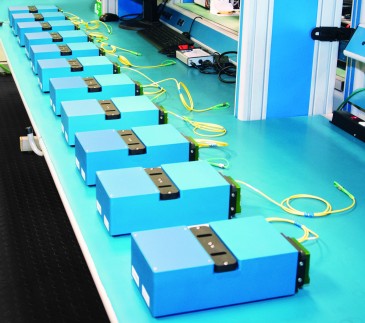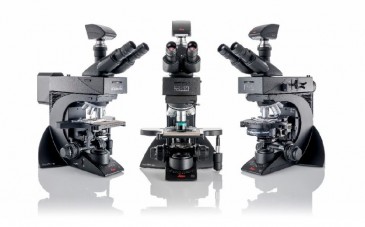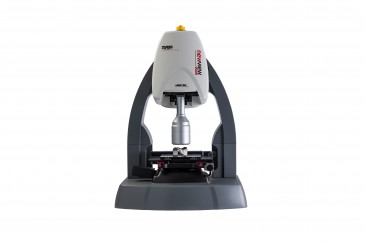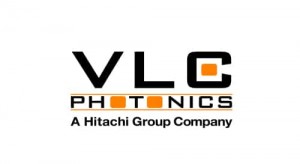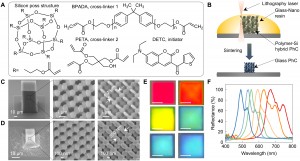
"Photonics have changed from a niche existence to a worldwide accepted key enabling technology, which is a driver for innovation and plays a decisive role for many end users”, explains Thilo Brodtmann (pictured here) from the German Engineering Federation VDMA at the Laser World of Photonics in Munich, Germany.
The new “Photonics Industry Report 2013” was presented for the first time as a result of a joint initiative by the associations VDMA, Spectaris (the German high tech industry association), ZVEI (the German Electrical and Electronic Manufacturers Association) and BMBF (the German Federal Ministry of Education and Research).
Overall, the industry has experiencing steady growth since 2005. In 2011, the worldwide photonics market totalled about EUR 350 billion, compared to EUR 228 billion in 2005. The average real growth of the photonics industry was about 6.5 % per annum and exceeded the growth of worldwide GDP by more than two-fold. By 2010 / 2011, the photonics industry managed to recover to its pre-crisis level of 2008. The new industry study examines ten photonics sub-segments in all and analyses them in detail for the period from 2005 through 2011. The supplementary medium-term prognosis considers the future growth outlook of the sub-segments from now until 2020.
Photonics in Germany as an engine for exports and employment
The domestic production of the German photonics industry totalled about EUR 27 billion in 2011 up 7% from EUR 17 billion in 2005. At 7%, the average real growth of the German photonics sector was slightly greater than the worldwide average, and with strong exports, it also far outpaced the German GDP and the growth of Germany’s industrial production. With an average share of about 8% of the world market, the German photonics industry has been able to maintain its position in the world market since 2005. In the strong core areas of the German photonics industry – specifically, in production technology (laser systems and laser beam sources along with lithography systems), in image processing and measurement technology, for optical components and systems, and in medical technology and life sciences – the world market share of 10 to 16% was even well above that, having been successfully expanded since 2005. Germany also has underscored its lead position in Europe with a share of more than 40 %. With an average export rate of 66%, the German photonics industry ranked well above the 47% average of the processing industries. And at about 9 %, the R&D ratio was also well above the industry average. At the same time, the German photonics industry has proven to be a strong job engine: Between 2005 and 2011 some 30,000 new jobs were created. When direct supplier industries are included, the workforce comprised 134,000 employees in 2011, which was about 5 % more than the level of 2005.
Production shift toward China
Photonics production data – broken down by region and country – reveal a shift of market share in the direction China which, with 21% market share, has now nearly reached parity with world market leader Japan. Those same data also offer clear evidence that regions and countries have a tendency to specialise in individual application segments. The business activities which are oriented more towards production and manufacturing engineering, along with medical technology and life sciences, remain concentrated in the “established” industrial regions, namely Japan, Europe and Germany, and North America. The segments with a stronger IT and communications technology orientation, on the other hand, are clearly concentrated in Asia and the emerging industrial nations of China and South Korea, but also Taiwan and Malaysia.
Leading world market positions in core areas
Since 2005, the world market shares held by North America and Japan have declined significantly. With about 18% market share, Europe ranks ahead of North America (about 12%) and, like Germany, has managed to underscore its leading world market position in the core areas:
· In the area of production technology, Europe’s photonics industry holds a share of about 55% of the world market and has a worldwide leading position in both laser material processing and in lithography equipment.
In the area of optical components and systems, Europe’s world market share is a full 40%, half of which represents Germany.
· In image processing and measurement technology, Europe’s world market share is about 35%, of which Germany holds a share of about 55%.
· In medical technology and life sciences, Europe has a world market share of nearly 30%, and 55% of that relates to Germany.
Photonics enables technologies, industries and solutions
As emphasised in the Photonics21 report, photonics offers solutions to future challenges in many areas, whether they involve the next generation of industrial manufacturing methods, or energy production and efficiency, or health, environmental protection and safety. It is an important key technology with considerable leverage on other industries and service sectors. Photonics technologies, products, components and system solutions are used in many customer industries along the entire value-added chain: they enable business to enhance their competitiveness through more efficient and more sustainable production processes, faster process workflows and the development of new application fields.
Expection is that growth exceeds GDP
The study projects that the worldwide photonics market will grow to around EUR 615 billion in 2020. That corresponds to an average nominal growth rate of 6.5%, which makes it about half again as much as the projected rate of growth of worldwide GDP. So the photonics sector will also continue to make a significant contribution to prosperity and help create new jobs in the future. The German photonics industry is expected to post a domestic production volume of nearly EUR 44 billion by 2020. That corresponds to an average nominal growth rate of 5.6% per annum. At the same time, the core areas will continue to become increasingly important. The number of employees, including those of suppliers, will rise to about 165,000.





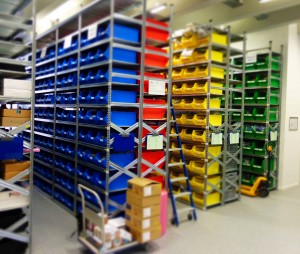


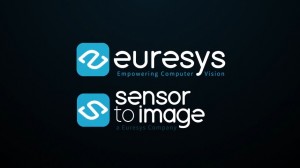





























 Back to News
Back to News


